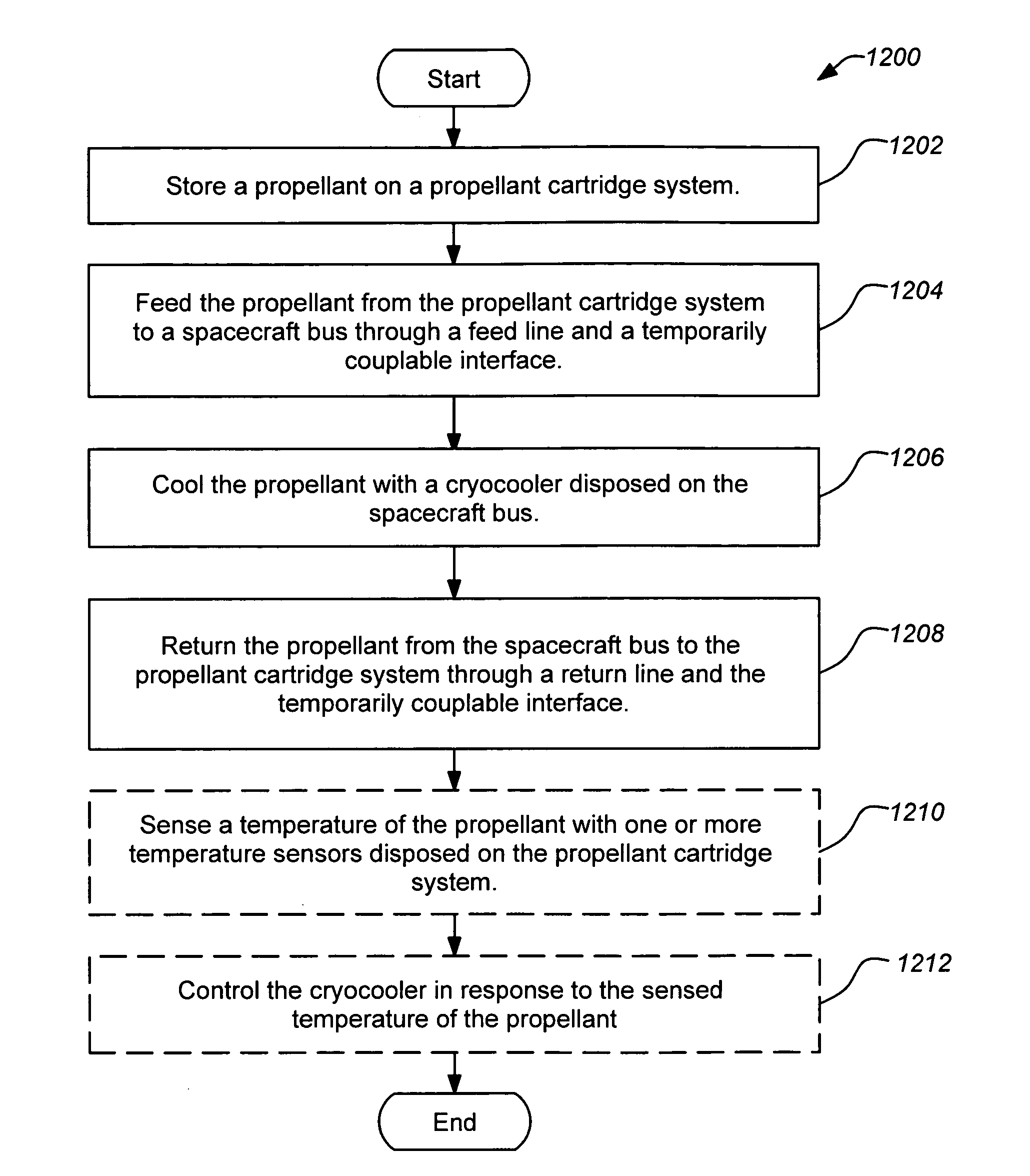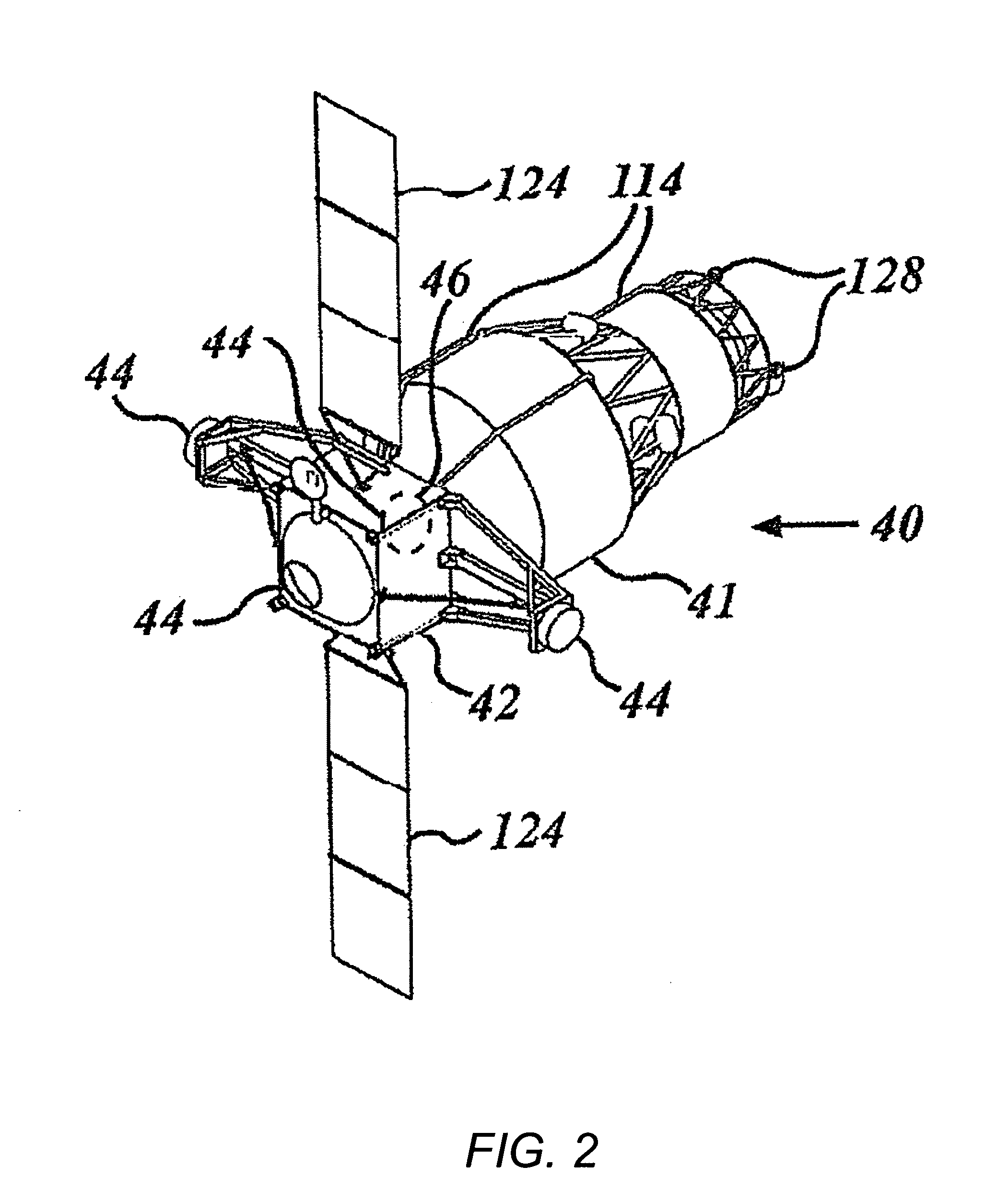Remotely located cryocooler
a cryocooler and remote location technology, applied in the field of propellant replacement systems of spacecraft, can solve the problems of limited and restricted performance, current surface activity modules, and many spacecraft being incapable of performing extended missions or missions, and achieves low cost, efficient and inexpensive techniques, and cost-effective effects
- Summary
- Abstract
- Description
- Claims
- Application Information
AI Technical Summary
Benefits of technology
Problems solved by technology
Method used
Image
Examples
Embodiment Construction
1. Overview
[0033]The cryocooler may be located in a standard spacecraft bus (such as a spacecraft bus box) along with other standard spacecraft elements known in the art (e.g. communications, power generation and distribution, navigation, data handling, thermal management, etc). The cryogenic propellant tanks may then comprise a separable and distinct propellant cartridge system docked to the spacecraft bus containing the cryocooler. Insulated lines run from the cryogenic tanks to the cooling interface (or cold heat exchanger) of the cryocooler. In operation, propellant (e.g. fuel and / or oxidizer) may be continuously pumped from the tanks through the cryocooler cold heat exchanger and then back to the tanks on the separable propellant cartridge system spacecraft. After the propellant tanks are depleted, the cryocooler may be switched off and supply / return lines disconnected. The propellant cartridge system is then undocked from the bus (and typically discarded). A new propellant car...
PUM
 Login to View More
Login to View More Abstract
Description
Claims
Application Information
 Login to View More
Login to View More - R&D
- Intellectual Property
- Life Sciences
- Materials
- Tech Scout
- Unparalleled Data Quality
- Higher Quality Content
- 60% Fewer Hallucinations
Browse by: Latest US Patents, China's latest patents, Technical Efficacy Thesaurus, Application Domain, Technology Topic, Popular Technical Reports.
© 2025 PatSnap. All rights reserved.Legal|Privacy policy|Modern Slavery Act Transparency Statement|Sitemap|About US| Contact US: help@patsnap.com



